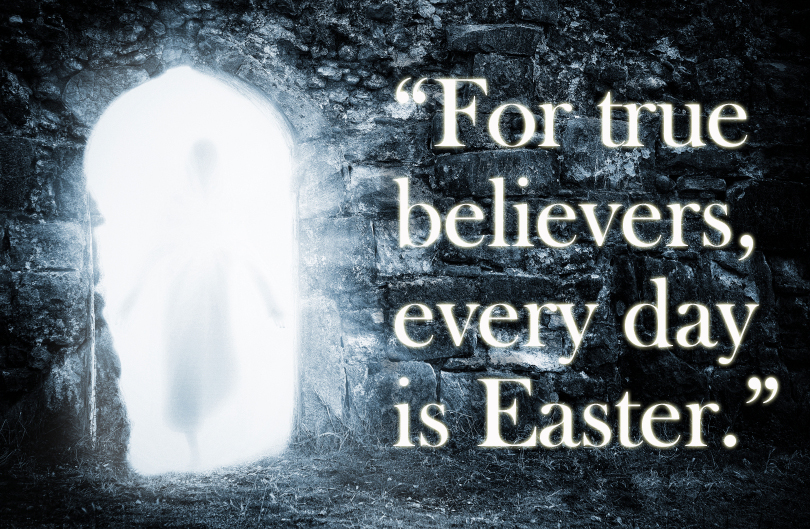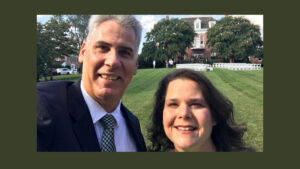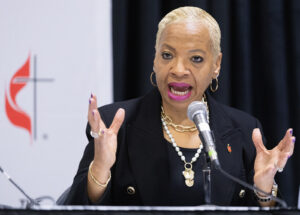
NASHVILLE (BP) — In A.D. 33 Jerusalem was a political powder keg ready to explode. More than ever, Jews expected a Messiah who would overthrow their hated Roman oppressors. In turn, the Roman Empire was spring loaded to pounce on any rivals to Caesar at the first sign of trouble.
Into that milieu came an itinerant rabbi from Nazareth, riding into town for Passover on a donkey and being proclaimed by the crowds as the promised Messiah. Within days one of two things would surely happen: either He would overthrow the Romans or suffer a brutal death.
This is one of many dramatic and theologically rich moments from the Passion Week highlighted in “The Final Days of Jesus,” a harmonization published by Crossway of the Bible’s four accounts of the week leading up to Easter. Drawing material from Matthew, Mark, Luke and John, Southeastern Baptist Theological Seminary professor Andreas Kostenberger and popular blogger and publisher Justin Taylor present the last week of Christ’s earthly life as a single, unified story. They dub it “the most important week of the most important person who ever lived.”
They explain the theological significance of key events and highlight Passion Week facts often overlooked by Bible students.
“As a biblical scholar, and as a Christian, I want to know what I can know about the Bible and about the life of Jesus as precisely as possible,” Kostenberger said in an interview with pastor and author Chris Brauns. “On the one hand, I want to be honest with the limitations we have with regard to the available evidence, but on the other hand, I want to use the evidence we have to the fullest extent possible to determine a given piece of information, such as the dates for Jesus’ crucifixion, burial and resurrection.”
A moment of particular significance during the Passion Week came at the crucifixion, Kostenberger and Taylor note. Jesus’ promise that a repentant thief would be with Him in Paradise, they explain in the book, illustrated salvation by grace through faith.
“Jesus’ acceptance of the man powerfully illustrates the opportunity for forgiveness and eternal life that will soon be proclaimed to all people on the basis of his sacrificial death for sin,” the authors note. “The robber has no time or ability to do any good works — he could not possibly make up for the wrong he had done if that were even possible — but he does have the strength to believe in Jesus and ask him for salvation. That is all that is needed, and the man’s eternal destiny changes decisively from separation from God to spending eternity with Jesus in Paradise.”
When it comes to the resurrection, Kostenberger and Taylor propose three scenarios of how the Gospel accounts — which are all slightly different — could fit together. Matthew, Mark and Luke each record a group of women going to the tomb on Easter morning while John tells only of Mary Magdalene going. The narratives make it clear that John is describing a different event than the other three.
Perhaps, Kostenberger and Taylor state, a group of women went to the tomb, and upon finding the stone rolled away, Mary Magdalene fled to tell the disciples while the others entered the tomb and discovered angels. After telling Peter and John that Jesus’ body had been moved, Mary returned to the tomb and saw Jesus.
Alternately, Mary may have gone to the tomb by herself before the other women arrived, found it empty and fled to tell the disciples, with the other women arriving later. Or Mary could have gone to the tomb alone initially and made a second visit with the rest of the women.
However the events unfolded, Kostenberger and Taylor turn the tables on critics who argue that the Bible’s resurrection accounts are contradictory and cannot be true.
“While the Gospel narratives are different, they are not contradictory. They reflect exactly what we would expect from eyewitness accounts of such an unexpected and supernatural event. Their very differences confirm the truthfulness of the resurrection,” Kostenberger and Taylor note.
The book’s commentary on the Easter narratives highlights other often neglected details. Among them:
— Judas likely was seated next to Jesus at the Last Supper, explaining how Jesus was able to give him a morsel of bread.
— Between Jesus’ teaching in John 14 and its continuation in John 15, He and the disciples probably moved from the upper room to the Garden of Gethsemane. That explains the final sentence of John 14, “Get up; let’s leave this place.”
— Pilate did not normally live in Jerusalem. He governed from Caesarea, along the Mediterranean coast, but came to Jerusalem during major festivals like Passover to keep order.
— Mark’s reference to Jesus’ crucifixion occurring at the “third hour” is probably not a precise reference to nine o’clock. Ancient time designations were very general and based on observing the sun’s position in the sky. Mark likely was making a general reference to the quarter of the day surrounding 9 a.m. — anytime between about 8 a.m. and 10:30 a.m. References to darkness at the “sixth hour” and Jesus’ death at the “ninth hour” are also general rather than precise indications of noon and 3 p.m.
— Jesus probably repeated the Great Commission many times during the 40 days between His resurrection and ascension. That accounts for the different versions of it spoken on different occasions in different books of the Bible.
The Passion narratives, Kostenberger and Taylor explain, are intended not merely to fill readers’ heads with historical knowledge, but to call them to faith in Jesus.
“Will you and I believe?” they write. “Will we place our faith once and for all in the one who came and died and rose again so we can be forgiven and have eternal life? If so, our Easter has dawned, and God’s Morning Star has arisen in our hearts.
“For true believers, every day is Easter, and we can celebrate Easter joyfully, thanking God for his amazing salvation and looking forward expectantly to the day when our Lord will return and summon us to spend eternity with him, for his glory and for our eternal happiness.”
–30–
David Roach is Baptist Press’ chief national correspondent. Get Baptist Press headlines and breaking news on Twitter (@BaptistPress), Facebook (Facebook.com/BaptistPress) and in your email (baptistpress.com/SubscribeBP.asp).
















